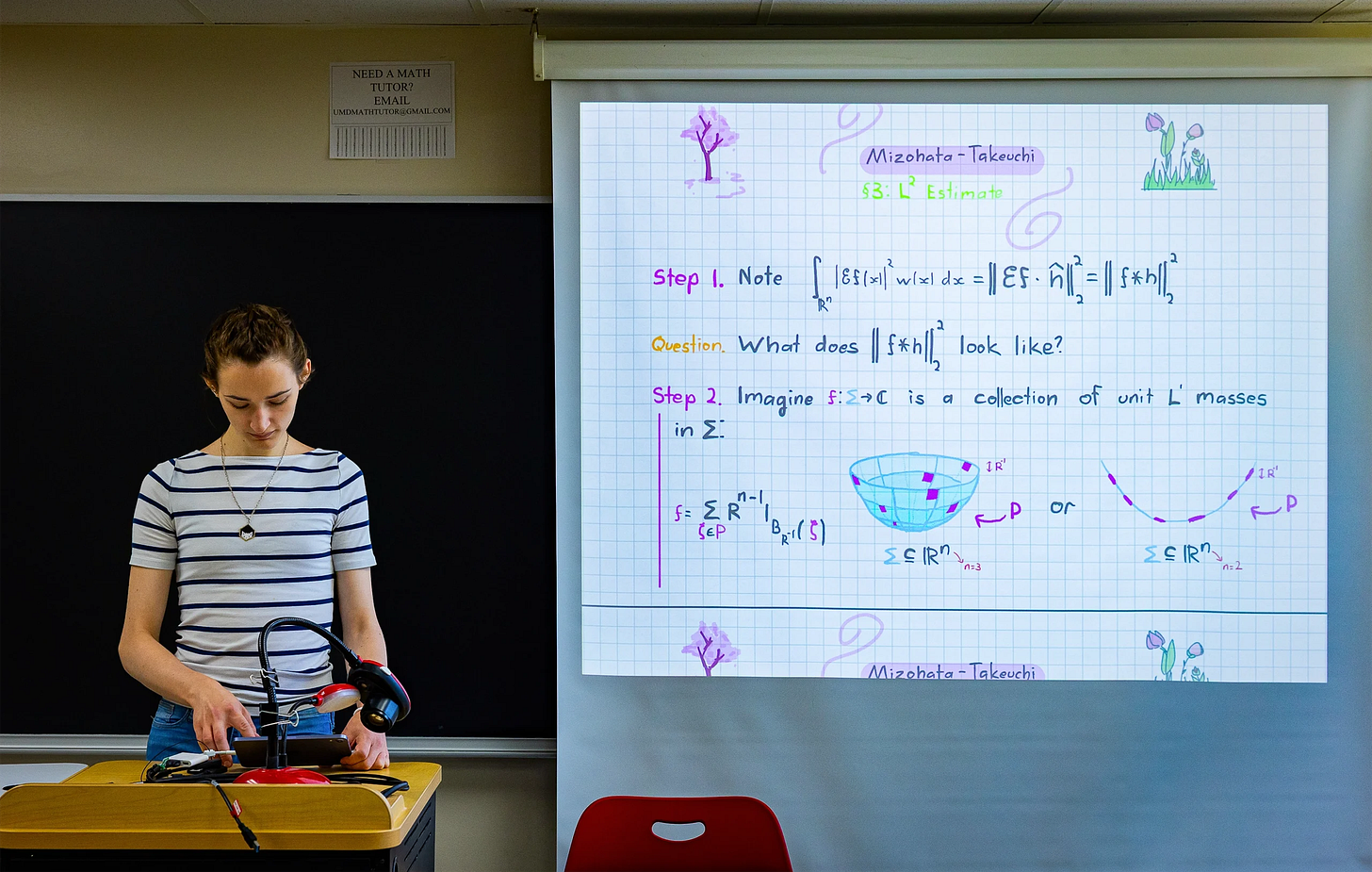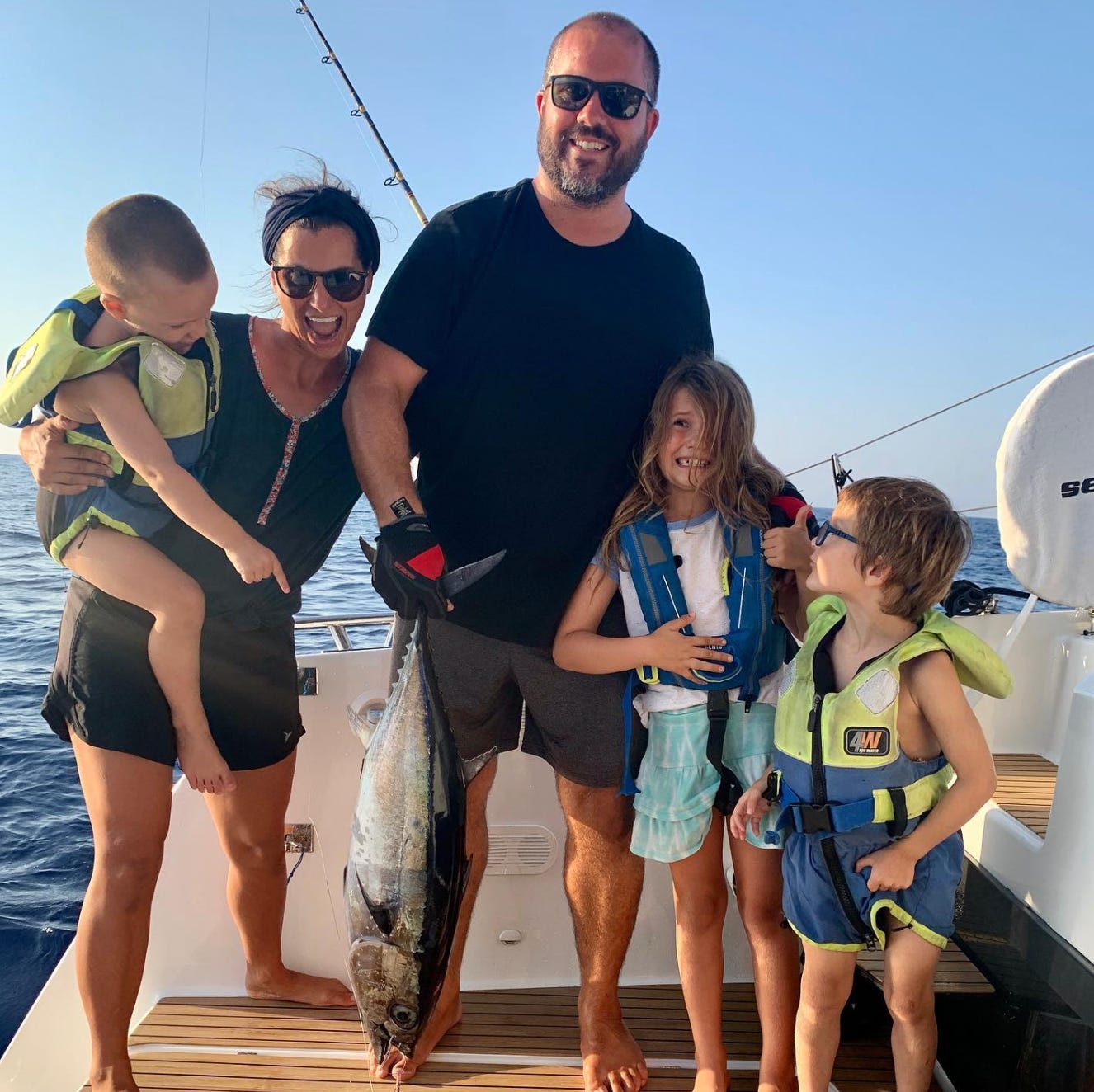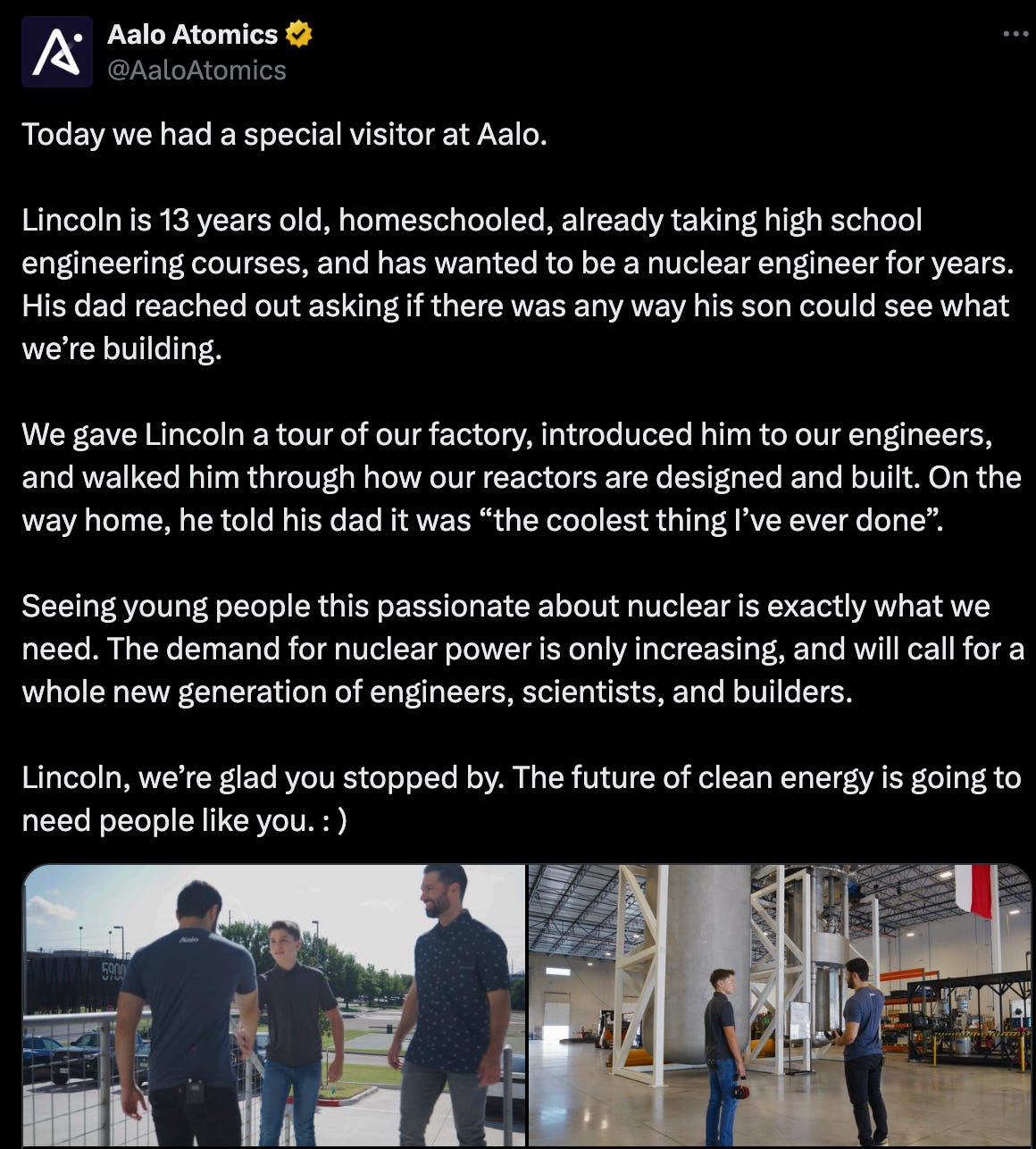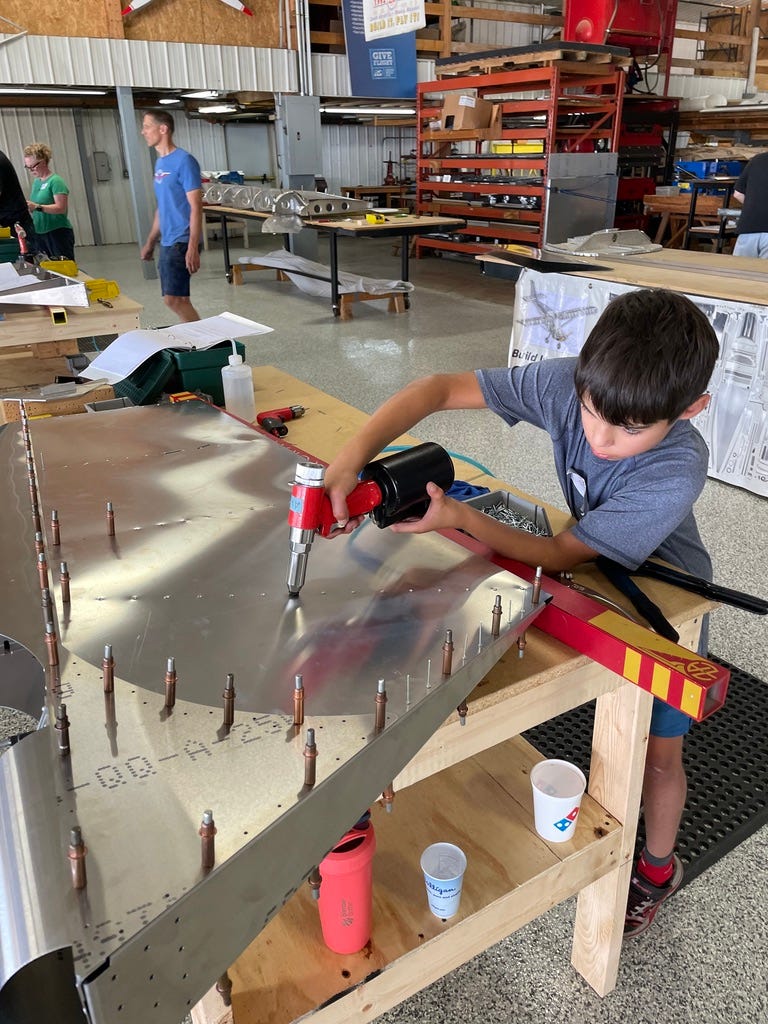You can just not do things
A guide to building an education more valuable than a college degree.
As a corollary to the common “you can just do things,” most people forget that you can also just not do things.
Opting out of school in favor of alternatives like homeschooling is often resisted because people forget this.
You don't need to jump through the same formulaic hoops, spending a year in each grade just to reach college. The arbitrary timelines we treat as sacred aren't gospel, and they vary wildly across states, provinces, and countries anyway. What is consistent across district lines is how outdated most school curriculum is.
Hannah Cairo defies conventional educational pathways entirely. The seventeen-year-old recently made headlines for disproving the Mizohata-Takeuchi conjecture, a mathematical achievement that would be remarkable for any researcher, let alone someone who has never set foot in a traditional classroom. Homeschooled throughout her life, Hannah audited courses at UC Berkeley before bypassing college altogether to pursue her PhD. While Hannah is a more extreme wunderkind example, her story reminds people that the rules are only there as a palatable guide, not an absolute.
But even the average person underestimates and often ignores entirely how easy it actually is to opt out of school. Here in Ontario, homeschooling is as simple as submitting a yearly notice of intent, though legally even that step isn’t required. While it may be easy on paper, many families understandably struggle with the social pressures when weighing the decision to do something alternative to the norm. Parents can point blame at the school system when their child is failing, but you personally shoulder the blame if you've chosen to do something different, like homeschool. While that may feel risky, I'd argue the real risk is falling complacent to a system without questioning if there are better ways.
There are many cases of families turning to homeschooling as a last resort, often because of severe instances of bullying or unmet needs in school. Without making sweeping generalizations, I've observed these push-factor homeschoolers often focus on replicating school at home, just without the harmful environment.
For the purpose of this piece, let's call this cohort the school-at-home homeschoolers.
This is where most minds wander when they hear homeschooling. The school-at-home homeschoolers mirror the familiar structures of school through similar schedules, content, and benchmarks. They care deeply about covering all the required school material so their kid doesn't fall behind, possibly because they see homeschooling as a temporary phase. Their approach relies heavily on textbooks, worksheets, and grade-level curriculum as a way to provide continuity and stability.
Sure, there are plenty of homeschoolers who do this, but there's also another group — the intentional homeschoolers.
These are families who are choosing to homeschool because they believe they can design something better than what traditional public school provides. They are deliberate about what is worth keeping from school, but just as importantly, they thoughtfully decide what they eliminate and won’t carry over. This distinction allows them to think outside the box and capture more of homeschooling’s benefits, because they’re not preoccupied with matching pace or checking every school benchmark. As a result, this group often emphasizes personalized and curated learning experiences, weaving in practical learning alongside academics. I hesitate to identify this as unschooling, simply because the intentional homeschooler may still prioritize structure in certain subjects and see value in formal study, with an opinionated lens.
And while I’m drawing an exaggerated line between two distinct cohorts here, this is a false dichotomy in the strict sense. Many families who begin homeschooling with a school-at-home mindset often evolve into a more intentional approach along the way.
If more families approached homeschooling as a better path versus a last resort, it would shift the narrative entirely. You have considerably more freedom to design learning than most people recognize. Yes, you must cover the foundations, but that doesn't require replicating an outdated institution. Real leverage lies in recognizing that education isn't a zero-sum game; time saved by shedding the ineffective can be reinvested into experiences with compounding returns. The continued rise of homeschooling is a direct result of more families discovering the upside of this flexibility.
The best way I can delineate what intentional homeschooling looks like is through the varied examples of exceptional families I’ve spoken with and observed:
Place-based homeschooling
Consider two scenarios. Which would lead to a more immersive and memorable education experience?
Learning about the Pyramids from a PowerPoint in a fluorescent-lit classroom
Standing inside the Great Pyramid, seeing its scale and craftsmanship for yourself
The latter is clearly superior.
Travel is one of the most enriching ways to experience the world and receive an education. It's hard to consider a scenario where sitting in a classroom beats the opportunity to experience the world, but unlike homeschooling, traditional school doesn't offer the same flexibility.
On the ambitious side of this spectrum you have the Matt Griswolds of the world. Matt sailed the world for four years, visiting eighteen countries, with his wife and three children.
On how he handled schooling during this time:
The boat, the sea, and the places we go are all a classroom so we try to spend even more time teaching the kids on walks and dives. When you realize that school is all around you then you also accept that everyone you encounter is a teacher, and we have enjoyed the hospitality of many strangers that have taught our kids about their culture, food, and history.
As a more common arrangement, my friend Lisa enrolls her children in local schools when they travel. While not exactly formal homeschooling, it offers them plenty of opportunities to be deeply immersed in the culture and language of a new place. She described this process as surprisingly easy to arrange.
But of course, regular travel-based education is not always financially or logistically feasible for most families, and even if it is, it involves a serious lifestyle change not everyone is comfortable making. The principle, however, scales to more accessible applications.
It can be as simple as bringing your child with you to run adult errands. These everyday tasks offer a wealth of opportunities for real-world learning and hands-on experience. You’d be surprised at how willing professionals and small business owners are to share with young people who are curious. As homeschooling advocate
has said, “people will do all sorts of things for interested children.”Lincoln, a thirteen-year-old homeschooler passionate about nuclear engineering, recently toured the Aalo factory after reaching out to the company. They not only responded but gave him a full behind-the-scenes look at their operations.
There are a host of creative ways one can approach homeschooling on the basis of location that don’t need to be extravagant or expensive. Some of the most unlikely but memorable experiences can materialize with a simple ask. As I frequently like to say, “closed mouths don’t get fed.”
Entrepreneurial homeschooling
Intentional homeschooling can also take the form of entrepreneurship and participating in the modern day family business. Many entrepreneurial tech elite in places like Austin are rejecting traditional school and embracing the homeschooling movement, often by immersing their children in their businesses and providing them with access to tech and social capital.
This is far from a new trend but rather a return to natural learning. We evolved from hunter-gatherer tribes where children grew up with a deep understanding of adult work, both through real-life exposure and imitation through play.
In Advice to Entrepreneurial Parents,
outlines first and foremost, you must inspire your child:
Above all, ensure that your children respect and, ideally, are inspired by your family's business achievements. This consists of:
A. Having great achievements that you are justifiably proud of.
B. Articulating the well founded case for them.
C. Doing your best to ensure that schools, teachers, or peers don't undermine this respect.
Beyond being a role model, this endeavor should progress gradually. It can start with dinner table discussions and job shadowing, move to skill development with manageable tasks, and eventually allow them to take on larger responsibilities and roles within the company.
Michael describes a number of scenarios to illustrate what this looks like in practice (many of these young people are alumni or current students from his virtual school, The Socratic Experience):
Braden Blacker’s dad is a serial entrepreneur, most recently selling Songclip (Audiobyte). He is now a principal for Concordia Capital, which both invests for family offices and provides investment banking advisory services. Braden had been following his dad’s work, reading his pitch decks, listening to calls, sometimes going to meetings, for years. By the time he was in high school, he was selling hoodies online and in a band trying to promote their music. It was then that he realized that the entire challenge in music was distribution.
With experience producing his own music, he began reaching out to influencers and offering to write and produce music for them, thus leveraging their existing fame and audience into pop star status for them. He was able to get a few gigs like this and then got into talent management for influencers. This led to a gig while still 17 at Fixated, a new media company for content creators. After six months there he left to go on his own as a digital marketer and talent manager, now working with his dad on media, content, and advertising deals, with Braden at 18 the lead advisor on the content side and his dad and Concordia as capital partners.
And another:
Emilio Tucker’s dad, Jack Tucker, buys and sells real estate. As a 12 year old, Emilio was given the task of vetting tax delinquent properties based on a set of criteria. Once he mastered the criteria, he hired and managed a team of virtual assistants to find more properties. As AI agents improved and the difficulties of managing human beings became apparent, by the time he was 13 he had let go of the virtual assistants and was vetting properties on government databases using an AI bot that he had developed. Again, his dad had immersed him in his business world for years, engaging in calls, explaining what he was doing, teaching him the basics. Emilio joined The Socratic Experience again for two hours per day to obtain additional conceptual frameworks regarding entrepreneurial activity.
He and his dad are constantly exploring additional potential AI businesses. He is racing through Math Academy for math, covering high school geometry as an 8th grader in three months. But mostly he works with his dad and receives performance-based compensation which is already in the six figures range. He is legitimately leading his branch of the family business.
You don’t need to have a family business to engage in this type of homeschooling either. If you are a creative or entrepreneurial person, there are many ways to immerse a young person in your projects and intellectual life. The most important thing is to collapse the hard line distinction between “kid work” and “adult work,” and embrace a more fluid, inviting approach to your professional life.
Early exposure to entrepreneurship has a lasting impact. The Lost Einsteins study estimates millions of brilliant inventors are never discovered for lack of early exposure to innovation. Researchers found that areas where clusters of innovation form—especially with high concentrations of businesses—had little to do with talent distribution, but a lot to do with the kind of exposure to innovation young people have access to, especially in early childhood. Parents, extended family, and friends all play a role in driving this.
This transmission of human capital can be referred to as Dinner Table Human Capital, and has proven to be valuable to innovative activity, not only in the creation of more businesses but in the creation of more successful ones.
In a large-scale study using detailed Norwegian registry data on 27,000+ startups, economists Hans Hvide (University of Bergen) and Paul Oyer (Stanford GSB) tracked entrepreneurs, their fathers’ industries, and outcomes over more than a decade. They found:
72% of entrepreneurs start in the same or closely related industry as their fathers.
Those who do are more successful - they raise more money, survive longer, hire more, and are up to 2x more likely to build a top 5% company.
Even when fathers have died, the effect persists, proving it’s not about direct help but knowledge passed down over years at home.
Compare this to traditional college graduates. The average college student accumulates $28,950 in debt and enters the job market with theoretical knowledge but little practical experience. Meanwhile, Emilio Tucker is earning six figures and building real businesses at 13. Even accounting for exceptional cases, early exposure to real work creates advantages that classroom learning can’t match.
Whether you’re fully integrating a child into the family business or involving them more peripherally through dinner table conversations, consider it a valuable gift of industry knowledge with compounding returns across a lifetime.
Project-based homeschooling
Another advantage of throwing out strict adherence to textbooks and timetables is that there are plenty of opportunities for deep, curated learning through projects.
In traditional school, the word “project” is thrown around loosely, but the opportunity for personalization and true depth is scarce.
Projects can range from recording a podcast or creating a comic book to designing and operating a small venture. If there’s a genuine interest to embark on a project, regardless of its scope or how ambitious it may sound, it's likely worth doing. Young people can accomplish remarkable things, and whether you truly believe this will determine the kind of limitations you place on “saying yes.”
Again, I’ll illustrate with one of the most impressive examples I can think of:
who is building a plane (literally!) with his eight-year-old son. After repeated and worrying signs his son was not thriving in school, Latham pulled him without much of a plan. He admits his initial approach to homeschooling using classical education didn’t stick, and it took some ironing out before he and his son found a system that truly worked.Latham met another homeschool dad who had a workshop with a 3D printer and built projects with his kids. This inspired Latham to introduce weekly “project day” to his son. When he suggested they start building something, his son immediately proposed the most ambitious thing he could think of, an airplane. He had already picked out a specific model, which happened to be a half a million dollar plane, and Latham figured he was testing boundaries to see where his limits were. But his son persisted. Latham, seeing the passion his son had for this unusually audacious project, considered if there was any reality in which this could be possible. He wanted to say yes.
He called up a friend who had built an airplane as a kid for advice who likened it to “a bit like doing Legos except you get to fly it afterward.” He convinced him that it would be hard but not impossible, and that his son would absolutely love it. That was all Latham needed to hear.
He proposed an agreement to his son: if he really wanted to do this, then he would need to be all in. They would have to work together, and figure out how they would fund this expensive project.
They’ve since made great progress, flying out to Missouri for a workshop where they built the tail for their Zenith bush plane. They now build regularly, sometimes dedicating entire weeks on this project. Their end goal is to take off from the family’s backyard, fly to a river, go fishing for a few hours, and fly home.
Building a plane has become so much more than just building, though. Aside from the practical skills Latham’s son is acquiring, it’s created opportunities for deep conversations while working with their hands, and has completely altered his son’s attitude toward learning. Not to mention, there’s a clear path to securing an internship if Latham’s son decides to pursue aviation as a career.
These stories vary in their specifics, but they all represent intentional homeschooling at work. Instead of bringing school home and replicating the same tired structures, these families recognized they could create something with far greater impact.
The takeaway here is bigger than just a different way to homeschool. It's a rebuttal to the entrenched assumption that formal school is the only way to get a world-class education. This assumption becomes even more questionable when you consider that many of history's most innovative thinkers never set foot in a traditional classroom.
Traditional college graduates typically emerge with debt and theoretical knowledge, then spend years developing practical skills and professional connections. In contrast, intentional homeschooling creates a different path entirely, one where young people build real expertise and meaningful relationships while developing the confidence that comes from solving actual problems. The result is adults who enter the world not as students transitioning to workers, but as capable individuals already contributing value to society.
—
If this post resonated with you, consider sharing it with someone in your network who might also be thinking about these ideas.
As always, thanks for reading.
-Sam








This is so awe-inspiring. If you haven’t seen it, you would love the instagram account couture.to.the.max It follows a kid who’s been working as a fashion designer since he was 4. I think he’s around 9 or 10 now and it’s so incredibly impressive. As far as I know, this is a case where the parents recognized and really supported his interest from an early age
Great essay! Really enjoyed it, thank you for sharing it with me.